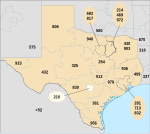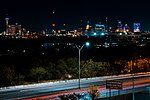Spanish Governor's Palace
1722 establishments in Texas18th century in TexasAdobe buildings and structuresFormer governors' mansions in the United StatesGovernor of Texas ... and 10 more
Historic house museums in TexasHistory of San AntonioHouses completed in 1749Houses in San AntonioHouses on the National Register of Historic Places in TexasMuseums in San AntonioNational Historic Landmarks in TexasNational Register of Historic Places in San AntonioPalaces in the United StatesSpanish Colonial architecture in Texas

The Spanish Governor's Palace is a historic adobe from the Spanish Texas period located in Downtown San Antonio. It is the last visible trace of the 18th-century colonial Presidio San Antonio de Béxar complex, and the only remaining example in Texas of an aristocratic 18th-century Spanish Colonial in−town residence. The National Geographic Society has named the landmark "the most beautiful building in San Antonio." The building was designated a National Historic Landmark in 1970. It is now owned by the city, and is open to the public as a museum.
Excerpt from the Wikipedia article Spanish Governor's Palace (License: CC BY-SA 3.0, Authors, Images).Spanish Governor's Palace
Calder, San Antonio
Geographical coordinates (GPS) Address External links Nearby Places Show on map
Geographical coordinates (GPS)
| Latitude | Longitude |
|---|---|
| N 29.425 ° | E -98.495833333333 ° |
Address
Spanish Governor's Palace
Calder
78205 San Antonio
Texas, United States
Open on Google Maps









